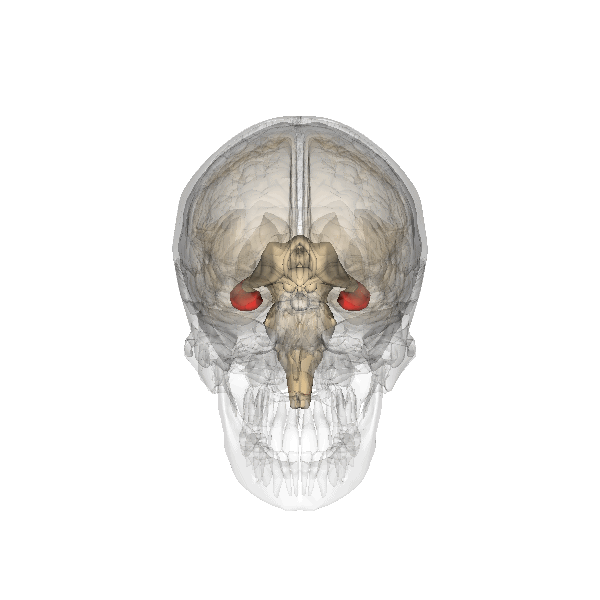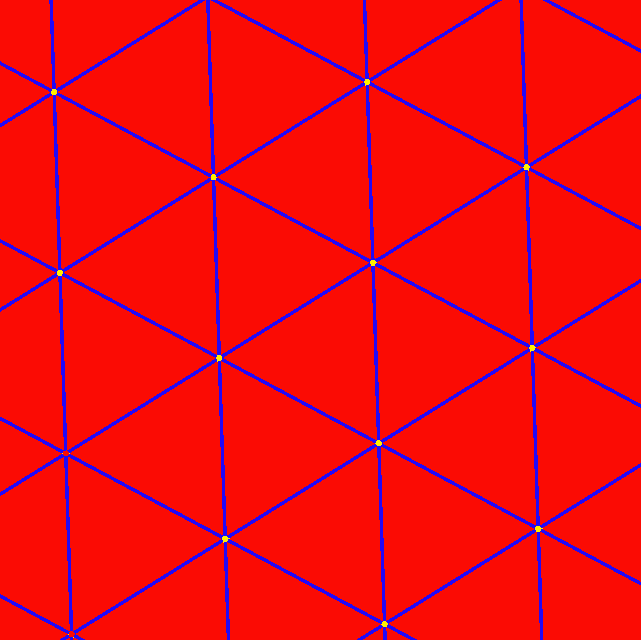|
Boundary Cell
Boundary cells (also known as border cells or boundary vector cells) are neurons found in the hippocampal formation that respond to the presence of an environmental boundary at a particular distance and direction from an animal. The existence of cells with these firing characteristics were first predicted on the basis of properties of place cells. Boundary cells were subsequently discovered in several regions of the hippocampal formation: the subiculum, presubiculum and entorhinal cortex. O'Keefe and Burgess had noted that the firing fields of place cells, which characteristically respond only in a circumscribed area of an animal's environment, tended to fire in 'corresponding' locations when the shape and size of the environment was altered. For example, a place cell that fired in the northeastern corner of a rectangular environment might continue to fire in the northeastern corner when the size of the environment was doubled. To explain these observations, the Burgess and O'Keefe ... [...More Info...] [...Related Items...] OR: [Wikipedia] [Google] [Baidu] |
Hippocampal Formation
The hippocampal formation is a compound structure in the medial temporal lobe of the brain. It forms a c-shaped bulge on the floor of the temporal horn of the lateral ventricle. There is no consensus concerning which brain regions are encompassed by the term, with some authors defining it as the dentate gyrus, the hippocampus proper and the subiculum; and others including also the presubiculum, parasubiculum, and entorhinal cortex. The hippocampal formation is thought to play a role in memory, spatial navigation and control of attention. The neural layout and pathways within the hippocampal formation are very similar in all mammals. History and function During the nineteenth and early twentieth centuries, based largely on the observation that, between species, the size of the olfactory bulb varies with the size of the parahippocampal gyrus, the hippocampal formation was thought to be part of the olfactory system. In 1937 Papez theorized that a circuit including the hippo ... [...More Info...] [...Related Items...] OR: [Wikipedia] [Google] [Baidu] |
Place Cells
A place cell is a kind of pyramidal neuron in the hippocampus that becomes active when an animal enters a particular place in its environment, which is known as the place field. Place cells are thought to act collectively as a cognitive representation of a specific location in space, known as a cognitive map. Place cells work with other types of neurons in the hippocampus and surrounding regions to perform this kind of spatial processing. They have been found in a variety of animals, including rodents, bats, monkeys and humans. Place-cell firing patterns are often determined by stimuli in the environment such as visual landmarks, and olfactory and vestibular stimuli. Place cells have the ability to suddenly change their firing pattern from one pattern to another, a phenomenon known as remapping. This remapping may occur in either some of the place cells or in all place cells at once. It may be caused by a number of changes, such as in the odor of the environment. Place cells ar ... [...More Info...] [...Related Items...] OR: [Wikipedia] [Google] [Baidu] |
Boundary Cell
Boundary cells (also known as border cells or boundary vector cells) are neurons found in the hippocampal formation that respond to the presence of an environmental boundary at a particular distance and direction from an animal. The existence of cells with these firing characteristics were first predicted on the basis of properties of place cells. Boundary cells were subsequently discovered in several regions of the hippocampal formation: the subiculum, presubiculum and entorhinal cortex. O'Keefe and Burgess had noted that the firing fields of place cells, which characteristically respond only in a circumscribed area of an animal's environment, tended to fire in 'corresponding' locations when the shape and size of the environment was altered. For example, a place cell that fired in the northeastern corner of a rectangular environment might continue to fire in the northeastern corner when the size of the environment was doubled. To explain these observations, the Burgess and O'Keefe ... [...More Info...] [...Related Items...] OR: [Wikipedia] [Google] [Baidu] |
Grid Cells
A grid cell is a type of neuron within the entorhinal cortex that fires at regular intervals as an animal navigates an open area, allowing it to understand its position in space by storing and integrating information about location, distance, and direction. Grid cells have been found in many animals, including rats, mice, bats, monkeys, and humans. Grid cells were discovered in 2005 by Edvard Moser, May-Britt Moser, and their students Torkel Hafting, Marianne Fyhn, and Sturla Molden at the Centre for the Biology of Memory (CBM) in Norway. They were awarded the 2014 Nobel Prize in Physiology or Medicine together with John O'Keefe for their discoveries of cells that constitute a positioning system in the brain. The arrangement of spatial firing fields, all at equal distances from their neighbors, led to a hypothesis that these cells encode a neural representation of Euclidean space. The discovery also suggested a mechanism for dynamic computation of self-position based on continu ... [...More Info...] [...Related Items...] OR: [Wikipedia] [Google] [Baidu] |
Head Direction Cells
Head direction (HD) cells are neurons found in a number of brain regions that increase their firing rates above baseline levels only when the animal's head points in a specific direction. They have been reported in rats, monkeys, mice, chinchillas and bats, but are thought to be common to all mammals, perhaps all vertebrates and perhaps even some invertebrates, and to underlie the "sense of direction". When the animal's head is facing in the cell's "preferred firing direction" these neurons fire at a steady rate (i.e., they do not show adaptation), but firing decreases back to baseline rates as the animal's head turns away from the preferred direction (usually about 45° away from this direction). HD cells are found in many brain areas, including the cortical regions of postsubiculum (also known as the dorsal presubiculum), retrosplenial cortex, and entorhinal cortex, and subcortical regions including the thalamus (the anterior dorsal and the lateral dorsal thalamic nuclei), late ... [...More Info...] [...Related Items...] OR: [Wikipedia] [Google] [Baidu] |
Place Cell
A place cell is a kind of pyramidal neuron in the hippocampus that becomes active when an animal enters a particular place in its environment, which is known as the place field. Place cells are thought to act collectively as a cognitive representation of a specific location in space, known as a cognitive map. Place cells work with other types of neurons in the hippocampus and surrounding regions to perform this kind of spatial processing. They have been found in a variety of animals, including rodents, bats, monkeys and humans. Place-cell firing patterns are often determined by stimuli in the environment such as visual landmarks, and olfactory and vestibular stimuli. Place cells have the ability to suddenly change their firing pattern from one pattern to another, a phenomenon known as remapping. This remapping may occur in either some of the place cells or in all place cells at once. It may be caused by a number of changes, such as in the odor of the environment. Place cells are ... [...More Info...] [...Related Items...] OR: [Wikipedia] [Google] [Baidu] |
Head Direction Cell
Head direction (HD) cells are neurons found in a number of brain regions that increase their firing rates above baseline levels only when the animal's head points in a specific direction. They have been reported in rats, monkeys, mice, chinchillas and bats, but are thought to be common to all mammals, perhaps all vertebrates and perhaps even some invertebrates, and to underlie the "sense of direction". When the animal's head is facing in the cell's "preferred firing direction" these neurons fire at a steady rate (i.e., they do not show adaptation), but firing decreases back to baseline rates as the animal's head turns away from the preferred direction (usually about 45° away from this direction). HD cells are found in many brain areas, including the cortical regions of postsubiculum (also known as the dorsal presubiculum), retrosplenial cortex, and entorhinal cortex, and subcortical regions including the thalamus (the anterior dorsal and the lateral dorsal thalamic nuclei), late ... [...More Info...] [...Related Items...] OR: [Wikipedia] [Google] [Baidu] |
Grid Cell
A grid cell is a type of neuron within the entorhinal cortex that fires at regular intervals as an animal navigates an open area, allowing it to understand its position in space by storing and integrating information about location, distance, and direction. Grid cells have been found in many animals, including rats, mice, bats, monkeys, and humans. Grid cells were discovered in 2005 by Edvard Moser, May-Britt Moser, and their students Torkel Hafting, Marianne Fyhn, and Sturla Molden at the Centre for the Biology of Memory (CBM) in Norway. They were awarded the 2014 Nobel Prize in Physiology or Medicine together with John O'Keefe for their discoveries of cells that constitute a positioning system in the brain. The arrangement of spatial firing fields, all at equal distances from their neighbors, led to a hypothesis that these cells encode a neural representation of Euclidean space. The discovery also suggested a mechanism for dynamic computation of self-position based on continu ... [...More Info...] [...Related Items...] OR: [Wikipedia] [Google] [Baidu] |
Speed Cells
Speed cells are neurons whose firing rates depend on an animal's speed through its environment. Together with place cells, grid cells, boundary cells, and head direction cells, they form a part of a larger set of neurons that are involved in cognitive mapping of the surrounding environment. Speed cells are found in the entorhinal cortex. Background With the discovery of grid cells in 2005 by Edvard Moser and May Britt Moser, realized that the grid cells were not alone in deducing the spatial location of the animal. The grid cells used information about direction and speed in order to find the location. The discovery of head direction by James B. Ranck, Jr. located the cells responsible for information on direction of head or heading of animal. The Mosers kept searching for the assumed speed cells and in 2015, were able to prove the presence of such cells in the medial entorhinal cortex. The speed cells fire in response to variations in speed of the animal. It was also found tha ... [...More Info...] [...Related Items...] OR: [Wikipedia] [Google] [Baidu] |

.png)


